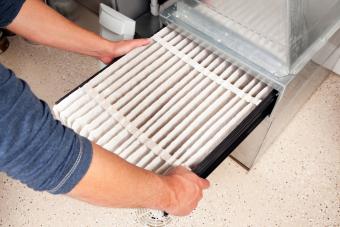
You know you’re really peeling back the façade that adults know everything when you discover that furnaces have filters, and you need to change them. Keep your air quality high as the crisp winter weather comes rolling in by learning how to change your filter, why you should, and when’s the perfect time to do it.
Figure Out if You’ve Got a Furnace or Boiler
Most modern homes use furnaces to heat everything, but that doesn’t mean it’s impossible to come across one that’s heated by a boiler. The easiest way to tell if you’ve got a boiler or furnace is to look around for radiators. Radiators link back to boilers, while duct systems are connected to furnaces.
Why You Should Change Your Furnace Air Filter
You want to change your furnace filter for the same reasons you change your other vent filters. Once dust, debris, and dander cover your filter, it can’t filter out as many of the particulates in the air. Since a furnace just pumps hot air into your rooms, poorly filtered air will come seeping in and might cause heightened allergies and sensitivities. Replacing the filter can help air quality.
How to Change Your Furnace Air Filter
With household maintenance, changing furnace filters is one of the easier projects to tackle. You can leave the giant toolbox in the garage. You’ll only need a few tools and the right filter.
@luke_pettersenrealtor How to replace a furnace filter
original sound - Luke Pettersen - Realtor/DIYer
1. Turn the Furnace Off
Whenever you’re working on any machinery that’s electrically powered, always turn it off before touching anything. So look for your furnace's off switch and click it before getting started.
2. Flip Up/Remove the Filter Cover
All furnace filters have a cover. For some, you’ll need to pull it completely off to replace the filter, and for others, you can just flick it up to access. If you don’t already know what size filter your furnace takes, pull off the cover to check the dimensions so you can pick up the right-sized filter the first time.
3. Remove the Old Filter
Pull that old puppy out of the furnace while it’s turned off and toss it in the garbage. If you’ve got dust/dander sensitivities and allergies, consider wearing a face mask, because the act of pulling the filter out might dislodge a lot of particulates and spray them into the air… and up your nose.
4. Put in the New Filter
Then, just slide that new filter in. Check that it’s facing the right direction. The arrows should point towards the inside of the furnace, and it should be tightly secured. Before you finish up, double check that you’ve taken all the plastic covering off. We know it sounds silly, but you’d be surprised at what distracted people can do and plastic film + a heated machine = a bad combo.
5. Reattach the Cover & Turn the Furnace On
Reattach the furnace filter cover, making sure it’s secure. Then flick the furnace back on and wait a minute or two to check that it starts up just right.
Which Filter Is Right for You?

Air filters come in various materials and price points. The cheapest filters have the least amount of filtration and will need to be replaced more frequently than higher-quality ones. There are different types of filters.
- Synthetic filters: These are the cheapest filters and have minimum protection.
- Polyester filters: These are mid-priced filters and have good protection.
- Electrostatic filters: Some electrostatic filters can be washed and last longer than disposable options.
- Pleated filters: These filters have high filtration capabilities and don’t affect your airflow.
Use HEPA Filters if You’ve Got Allergies
You can get air filters in a variety of price points, but if you have allergies, then you should only get HEPA filters. HEPA filters, or high-efficiency particulate air filters, have the highest quality filtration available. It’ll lock down just about every particulate that comes its way and keep it from circulating around your house.
How Often Should You Change Your Furnace Filters?
Because most people aren’t using their heating system until the cooler months, you usually won’t need to replace your filters multiple times a year. However, a great rule of thumb is to replace the filter in the early fall before the cool weather really kicks in, and then once again 3ish months later while winter is in full force.
If there’s a wildfire nearby, change your filters after the smoke has cleared, because it will have clogged up the filter with all the ash and particulates.
Keep Your Air Clean
During the winter months, you and your family spend more time indoors than out. Don’t let a clogged furnace filer make you suffer with runny noses and sneezing in low-pollen months. Instead, make a habit of changing your furnace filters before winter is in full swing.







